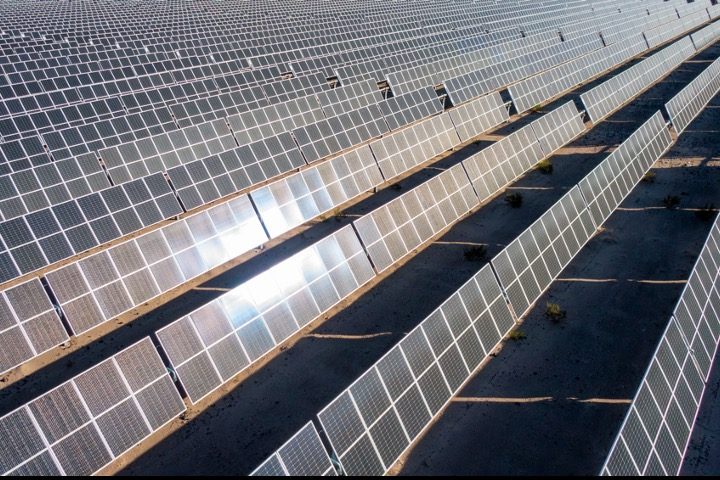
On March 16, a large hailstorm had devastating effects on the Fighting Jays Solar Farm, which is located near Needville in Fort Bend County, in the southeast part of the state near Houston. Reports of baseball-sized hail and high winds in the early morning hours caused havoc, severely damaging thousands of solar panels.
The solar farm spans some 3,300 acres, and was supposed to power over 60,000 homes with so-called clean electricity. But some residents fear that the term “clean” is a misnomer, and now fear that their groundwater may be in danger from chemicals, most notably cadmium telluride, which, according to the EPA, is a hazardous chemical. Cadmium telluride is used in most high-volume solar farms and is a component of Fighting Jays.
“The hailstorm we experienced Saturday morning was unimaginable,” area resident Nick Kaminski told KTRK in Houston. “We’ve never seen anything like it in our lifetime.”
Kaminski painted a vivid picture of how the hailstorm treated the solar panels. “They look like somebody took a shotgun and blasted it into the air and let the pellets fall down and shatter holes all in them,” he said.
Kaminski is worried that toxins from the destroyed solar panels could leak into his well water.
“My concern is the hail damage that came through and busted these panels we now have some highly toxic chemicals that could be potentially leaking into our water tables,” Kaminski told Fox 26 in Houston.
Fellow resident Mikes Fugua claimed that area residents have been concerned about the possible environmental impacts of the solar farm for a while now.
“We’ve asked for the same studies, and we’ve been treated the same way,” Fugua said. “We got nothing out of them.”
“There’s numerous makeup in the chemicals on this thing,” Fugua added. “The majority of them are cancer-causing.”
“That’s what we take a shower with, we drink with,” Kaminski worried. “It could be in our water now.”
HAZMAT teams have reported no contamination so far, and solar panel experts are counseling calm with regards to possible leakage.
“It’s possible you dented the solar panel, but they have a lot of protection layers on top of that,” Ramamoorthy Ramesh, a physicist at nearby Rice University who has worked on solar panels, told KTRK.
But photos of the damaged panels show more than “dents,” they show actual holes — which makes sense because they were hit with hail the size of baseballs.
According to Ramesh, any leakage from the panels would be small and easily contained.
“Even if I expose it, it has to get into the groundwater, which means water has to dissolve the cadmium telluride,” Ramesh said. “Cadmium telluride does not dissolve in water.”
So, the opinions from “experts” are not very reassuring.
Fighting Jays is not the only solar farm in America that’s struggled with hail in the last year. Last June, a large solar farm in Scottsbluff, Nebraska, was virtually destroyed by a similar storm featuring baseball-sized hail.
Solar power, which climate hysterics claim is one of the solutions to the so-called climate crisis since it is a “low emission” form of energy, is clearly not without environmental concerns. And it’s not just hailstorms that are a concern.
Recall that construction of a solar project on Guam created an environmental nightmare and spoiled a tourist destination, the Marbo Cave, an historic freshwater pool that was used by both Japanese and American forces during World War II.
The mining of materials used in so-called renewables creates its own environmental headaches as well.
Those who trumpet solar power as some sort of clean energy panacea should be made to answer for the environmental problems that their “clean energy” is creating.



